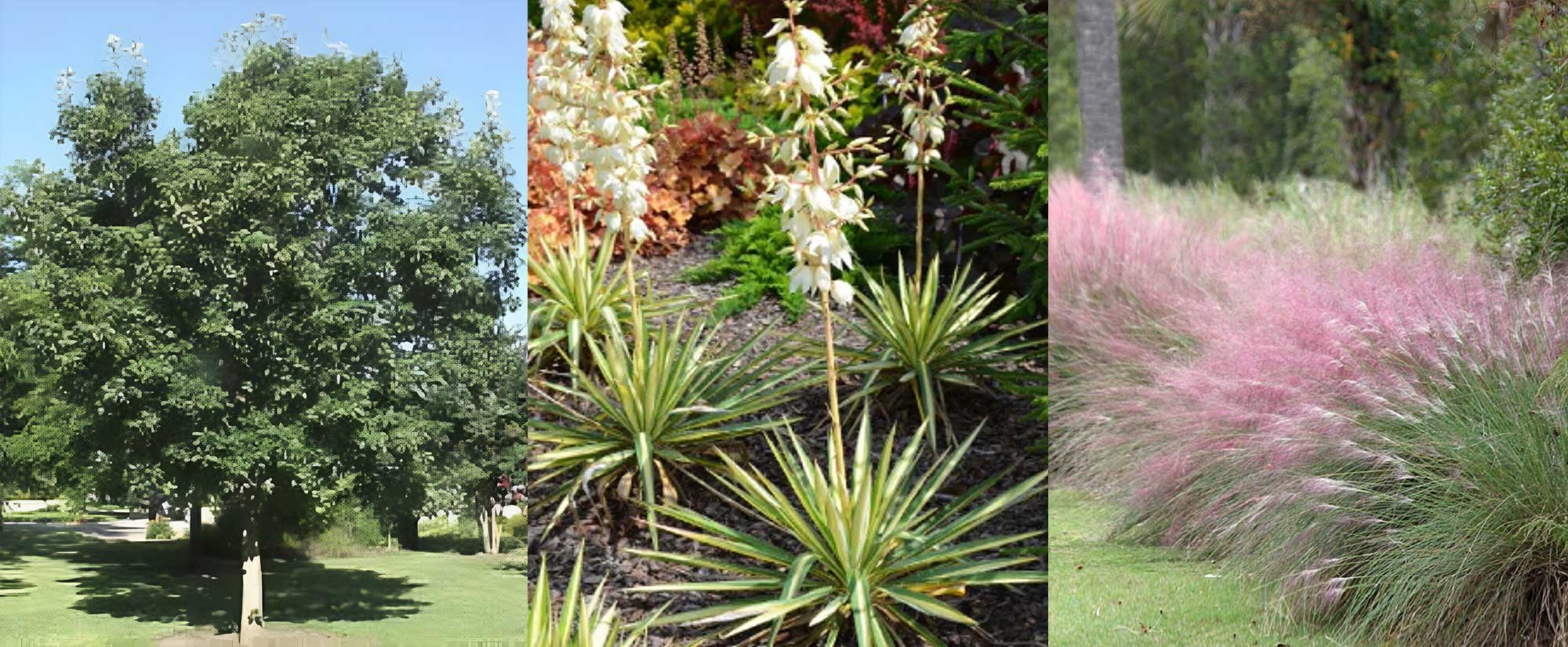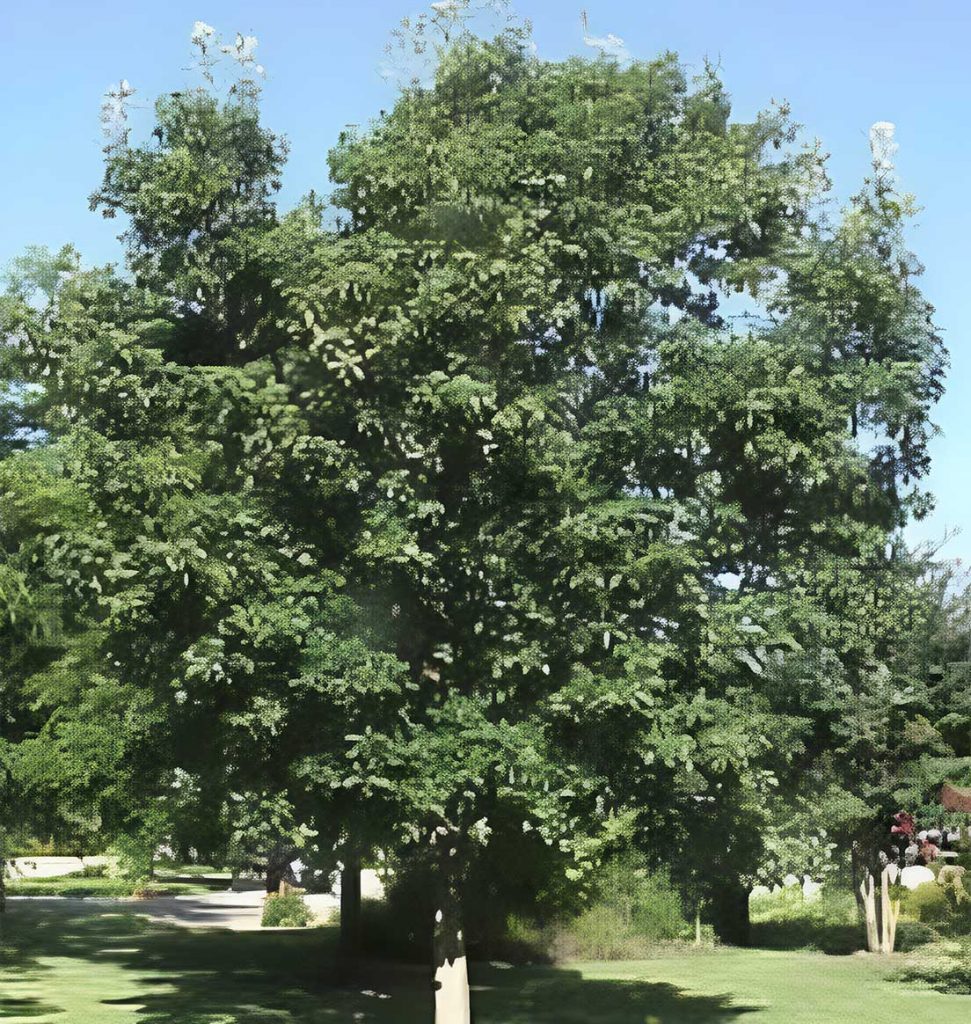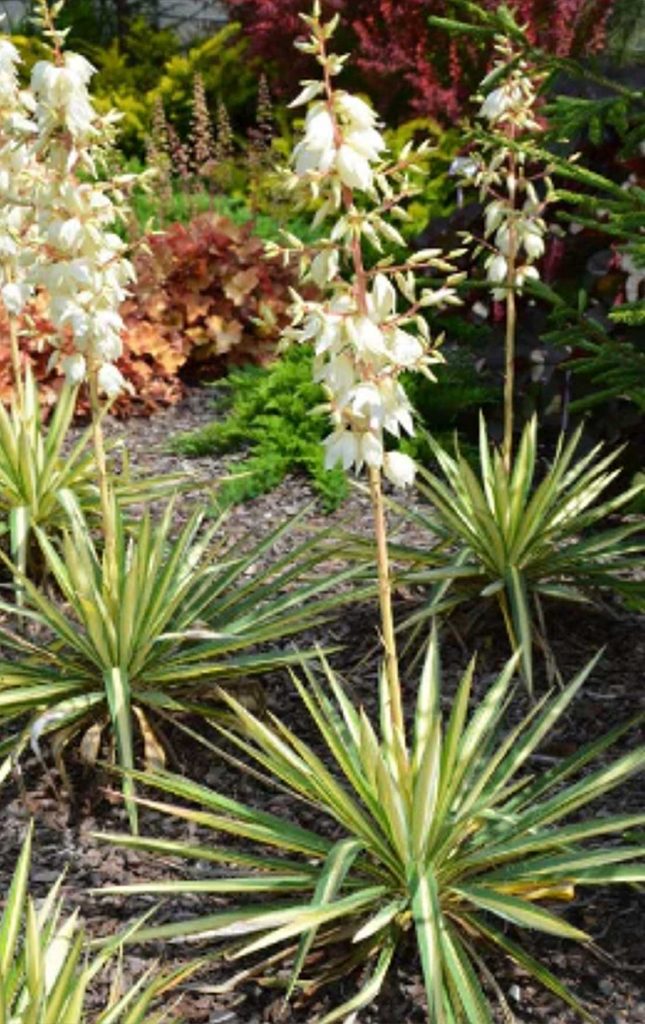
Tree of the month:
The Chinquapin Oak (Quercus Muehlenbergii) is a medium to large, moderately fast-growing, and long-lived tree native to eastern and central North America. It is renowned for its saw-toothed leaves that resemble a chestnut, its adaptability to various soil types, including alkaline conditions, and its attractive yellow-to-bronze fall color. Acorns serve as a food source for numerous animals and birds, while the tree also serves as a host plant for various moths and butterfly caterpillars. Recognized as a Texas Superstar plant, the Chinquapin Oak is celebrated for its adaptability and performance in a wide range of conditions.
Key Features of the Chinquapin Oak:
Leaves:
The leaves are simple, shiny, and yellowish-green on the top surface, and a paler, grayish-green on the underside. They are oval or oblong with saw-toothed or wavy, non-bristled edges, a characteristic that resembles the American chestnut.
Bark:
The bark is light gray, relatively thin, and either flaky or broken into short, blocky ridges.
Growth Habit:
Young trees often have a slender, upright canopy, which becomes a broad, rounded crown with age. The tree typically grows to 40 to 70 feet tall but can reach over 100 feet in ideal conditions.
Growth Rate:
Moderate, about 1–2 feet per year.
Shade tree:
A popular choice for landscaping due to its attractive, rounded crown.

Shrub of the Month:
The ‘Color Guard’ Yucca (Yucca Filamentosa ‘Color Guard’) is a decorative, evergreen perennial renowned for its architectural form and vibrant foliage. This low-maintenance plant boasts sword-shaped leaves adorned with a striking yellow or creamy white stripe running down the center. In cooler months, the leaves may exhibit a pink or rose hue. As a durable, drought-tolerant, and deer-resistant plant, it’s an ideal choice for xeriscapes, containers, or borders. Its robust architectural form and colorful foliage make it an excellent focal point.
Key Features of the Color Guard Yucca:
Flowers:
Mature plants produce a tall flower stalk, up to 6 feet high, in early to mid-summer. The stalks display panicles of fragrant, bell-shaped, creamy white flowers. These flowers are known to attract pollinators like hummingbirds.
Foliage:
The sword-like, variegated leaves grow in an upright, clumping rosette. A broad, creamy-yellow stripe runs down the center of each leaf, surrounded by green edges. The edges are also often trimmed with delicate, curly white “filaments”. In fall and winter, the foliage can develop hints of pink or rose.
Growth Habit:
This variety typically grows to a height of 2 to 4 feet, with a spread of 2 to 4 feet.
Care:
For the best foliage color, plant in full sun, where it can get at least six hours of direct sunlight per day. It can tolerate partial shade, but the colors may be less vibrant. Water regularly after planting until established, then water infrequently, especially once established, as it is very drought tolerant.

Perennial of the Month:
Pink Muhly Grass (Muhlenbergia Capillaris) is an ornamental perennial grass renowned for its delicate, airy plumes of cotton-candy pink flowers that bloom in late summer and fall. Native to North America, this low-maintenance, drought-tolerant grass boasts attractive, clumping green foliage that transforms into a warm tan in winter. Its versatility makes it suitable for mass plantings, borders, containers, and naturalized areas, while its deer-resistant nature adds to its appeal. Additionally, this pollinator-friendly plant attracts butterflies and beneficial insects, making it a valuable addition to any garden.
Key Features of the Pink Muhly Grass:
Appearance:
Fine, wiry, green foliage forms a dense, clumping mound. In late summer and fall, clouds of pink to pinkish-red flowers appear on tall, thin stalks, reaching heights of 2–4 feet. The plumes fade to a tan or beige color in winter but remain an attractive feature.
Growth Habit:
Pink muhly is a warm-season grass that grows in an upright, clumping form, reaching a mature height and width of 2–4 feet. It does not spread aggressively via rhizomes.
Care:
Plant pink muhly grass in full sun for optimal flowering, as it requires at least six hours of direct sunlight per day. It can tolerate some partial shade, but blooming may be less prolific. It thrives in well-drained soil and is adaptable to a wide range of soil types, including sandy, loamy, and rocky soils. Cut the foliage back to about 6–8 inches in late winter or early spring to make way for new growth.



